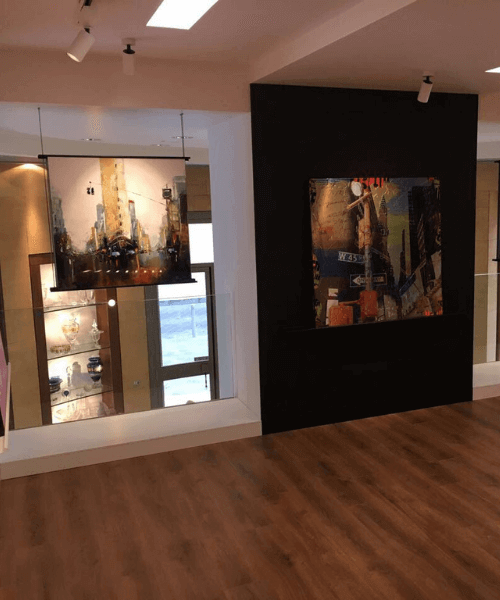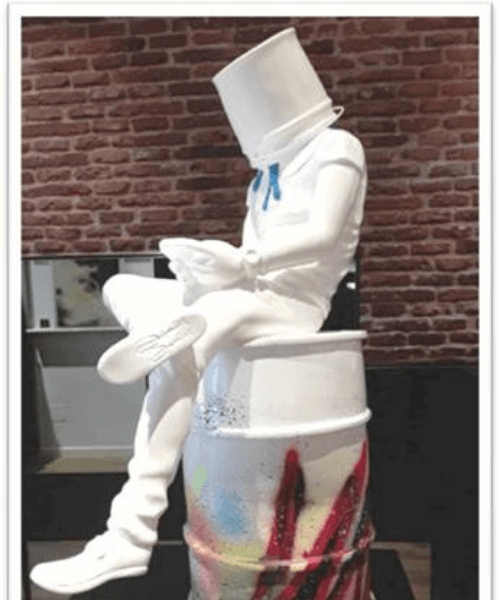How to resell an artwork?
Whether you are an art collector or an individual who has just inherited artworks that you do not want to keep, the second market of art is very flourishing today.
How do you resell a work of art in a market that is often obscure to the uninitiated? How to generate added value when selling your item? Although it is easier to buy than to resell an artwork it is possible to sell an object of art well through the right intermediaries.
Here is an overview of the alternatives available to you for reselling your works of art.
Summary
- Evaluate and authenticate your works of art
- The various intermediaries in the resale of works of art
- Depositing your works of art
- Resell your works of art to a gallery
- Resell your works of art to an individual
- The taxation of a work of art
Evaluate and authenticate your artworks
The first step before reselling a work of art is to estimate and authenticate it.
If the object is signed or reputable, authentication will be easy thanks to the artist's catalog raisonné.
If necessary, you can refer to online databases which have millions of artist references.
Discretion is essential, because the more you ask for advice, the more your work loses value with less surprise on the day of the sale.
The various intermediaries in the resale of artworks
There is no better intermediary than another.
It all depends on the nature of the art object you wish to resell and its estimated value.
The two traditional sales channels are over-the-counter and auction.
The sale by mutual agreement
Selling over-the-counter with a professional offers the advantage of increasing your chances of sale thanks to the existing network of buyers.
The downside is that the time to sell can sometimes be long.
Allow a margin of 20% to 50%. Agents, art dealers or galleries are authorized to sell by mutual agreement.


Resell your artworks at auction
Public auction operators offer services and guarantees that allow you to sell your work of art at an "objective" price through the auction game.
The big auction houses offer a free valuation service in order to sell your artworks art at the best price.
As the expertise of the work is relatively long, we recommend that you do it two or three months in advance.
During the appraisal, the estimate of the work is made according to the price indicated in the catalogs.
It is possible to indicate a reserve price below which the work cannot be auctioned.
During the sale, the auctioneer decides the starting price of the auction.
This is usually below the low price of the estimate in order to encourage bidding.
Depositing your artworks
You can deposit your works of art with a gallery owner, a second-hand dealer or an antique dealer.
These professionals often offer individuals the opportunity to estimate and authenticate an artwork.
They also take care of the sale. Depending on the status of your work, you can deposit it for free.
The selling price of a work of art is set from the price provided by the estimate.
A commission of 20% to 30% of the estimated price is added to the sale price.
The main advantage of this sales technique is that it offers great discretion to the work and to its seller.
Resell your artworks to a gallery
Reselling an artwork to the gallery that sold it to you is a classic case, but it is not the best solution.
Indeed, galleries generally prefer to have recent works and only buy back an older work with a commission.
The only exception is if there is something special about the work that makes it unique in the artist's collection.
Resell your artworks to an individual
This sale from individual to individual is sale by mutual agreement without an intermediary.
The sales agreement is signed between the seller and the buyer. This type of sale is reserved for works of art of lesser value.
In the event of a higher value estimate, it is preferable to have an intermediary accompany you: an expert or even a lawyer for international sales. The intervention of a professional avoids any form of litigation.
An art broker can also help you find a potential buyer for your artwork for a commission on the final sale price of the item.
The taxation of an artwork
The taxation of the resale of a work of art differs depending on the date of acquisition of the work.
If you have owned the item for less than 12 years or if you do not have the date of purchase, the resale will be subject to a flat tax.
Complementary articles:
On the sujet:
Understanding the art market
Find out more:



